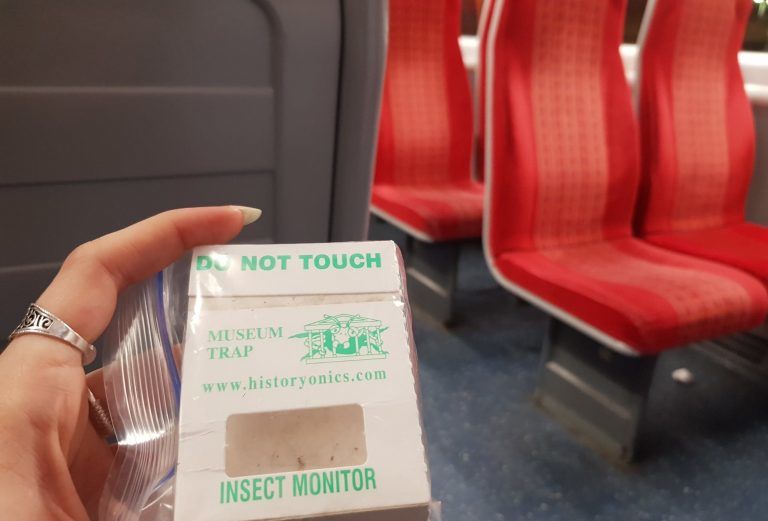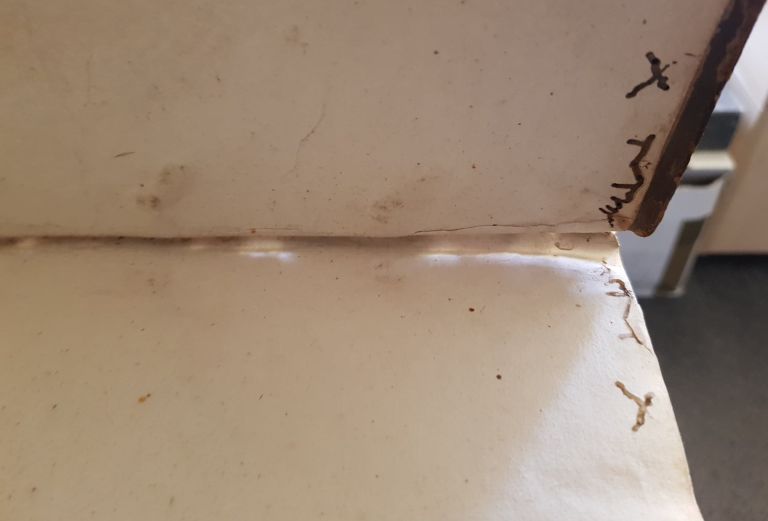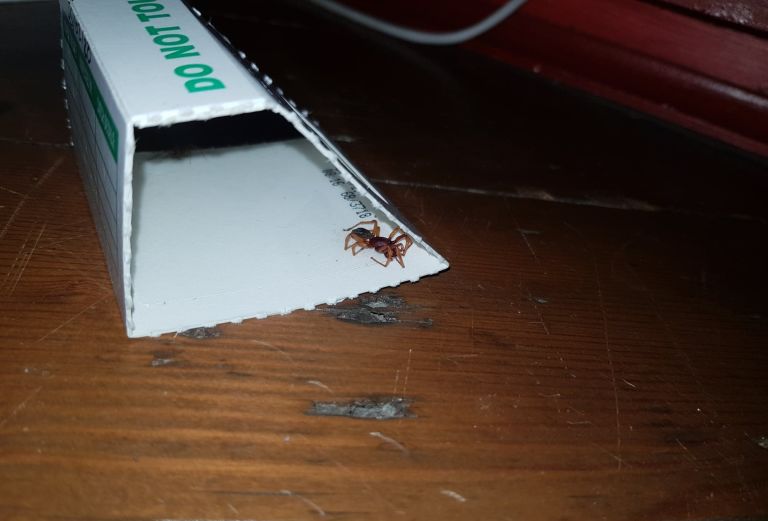
Adreanna Uttke, collections placement student
I will admit I initially struggled to get excited about delving into the land of pests, and never thought I’d be the resident ‘expert on pests’ at Fulham Palace. In case you aren’t already au fait with the world of museum pests (and why would you be?) and how they’re managed, here’s what the United States Environmental Protection Agency have to say:
Integrated Pest Management (IPM) is an effective and environmentally sensitive approach to pest management that relies on a combination of common-sense practices. IPM programs use current, comprehensive information on the life cycles of pests and their interaction with the environment. This information, in combination with available pest control methods, is used to manage pest damage by the most economical means, and with the least possible hazard to people, property, and the environment.
United States Environmental Protection Agency
So, basically, it’s a system which involves monitoring pests using traps and looking for pests or damage on or in objects, and dealing with any pest problems you do find. At the Palace we monitor high risk objects such as textiles and wood. We do visual checks of our objects every week looking for any signs of pests or damage and if we don’t have a known, active infestation we check the traps every three months. If any damage or pests are found then we deal with the pests in an appropriate way for the object and type of pest.
In order to get my title as ‘resident pest expert’ I undertook a couple of days training led by the Museum of London where I learned about the most common pests found in museums, how to catch them in the act, how to identify them, and how to eliminate them.

Day 1: Know your enemy and lay a trap
The first day involved visiting the costume store at the Museum of London to see a pest management programme in action. In case you’re not sure what qualifies as a pest, you might be interested to know that they’re not just clothes moths and rats – pests include insects, rodents, birds and some other animals – including bats! Of all the insects, only about 15-30 are actually pests to museum collections. These include wood worm, death watch beetle, biscuit beetles (they don’t just eat biscuits), and silverfish. Other pests can include mice, birds, and squirrels. Museums are attractive places for pests and they provide their four main needs: food, warmth, moisture, and harborage (somewhere to live).
The second half of the day was all about laying traps – choosing a good spot to place a trap is crucial. In historic houses these can include near chimneys and underneath floorboards – both spots where pests are likely to be undisturbed. A favourite type of trap in museums is the museum sticky trap. You may have spotted them before – they’re little white card boxes often placed on shelves and floors in historic houses and museums – the next time you see one look closely and see if you can spot any pests caught up in the sticky base.

Day 2: Understand, identify and control your enemy
The second day was hands-on. I learned the favourite foods, life cycles, and tell-tale signs of damage for about 30 different pests. I then saw them up close, using a microscope to look at pests which had been caught by our trainer. My partner and I were about 98% successful in our identifications of pests. Sometimes identification is difficult due to incomplete pests on your trap or insects which have non-pest doppelgangers. Following this, I learned how to control infestations – approaches vary depending on the type of infestation, which object has the infestation (a fur coat has a very different method to a vintage Bentley) or area where the infestation has occurred. One case study we learned about involved an infestation of non-pest spiders where there was no known reason for their sudden arrival and growth in numbers. Another case study was an organisation where an infestation of pests was being treated to no avail – it turned out that the reason for the failure was a misidentification of the pest. It’s a good thing I managed to score so well in the test!
We also had a bring and share with pest traps from our own organisations. I brought along a small pest trap which contained, among other things, a beetle which I could not identify (turns out it was a ground beetle). After the training, the pests and I enjoyed a lovely evening out in London after the training which involved a dinner in Chinatown, a theatre production in the West End, and a stroll through London after the show. The bag check person at the door for the theatre was quite confused by my travel buddies and upon finding them asked ‘just odd things?’ which caused me to feel like I needed to explain I didn’t have a weird obsession of traveling around with pests in my bag – at least not every day.
